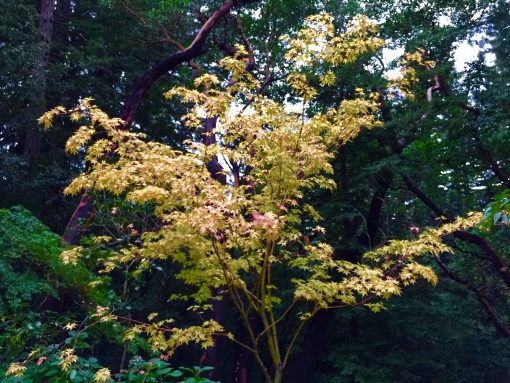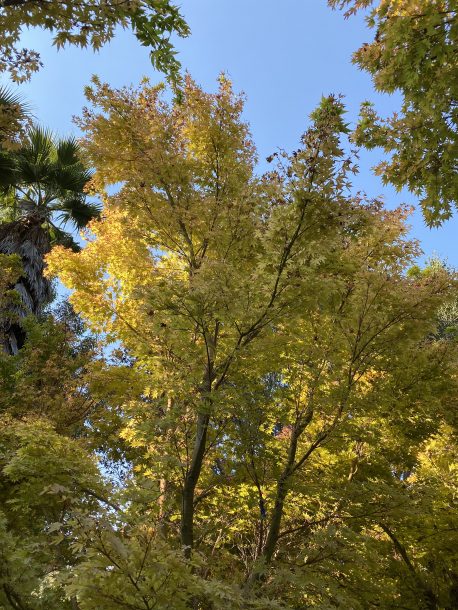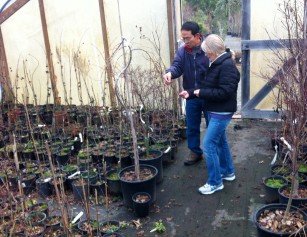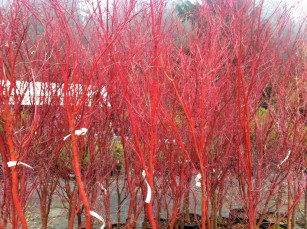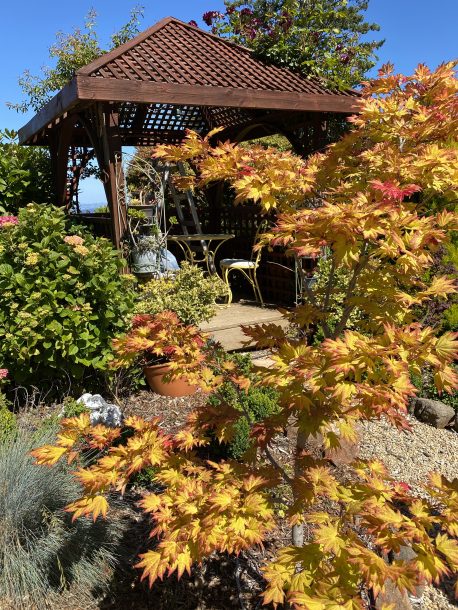
I’m starting to see the beginning of fall color on some trees. It’s an exciting time of year. My friend, Kate, in Bonny Doon has an Autumn Moon Japanese maple that’s always in color, no matter the time of year. On a visit to her fabulous gardening in June this gorgeous small tree was a vision of burnt orange and bronze. I’m looking forward to seeing it when it turns vivid orange and red soon. What other Japanese Maples are my favorites for our area?
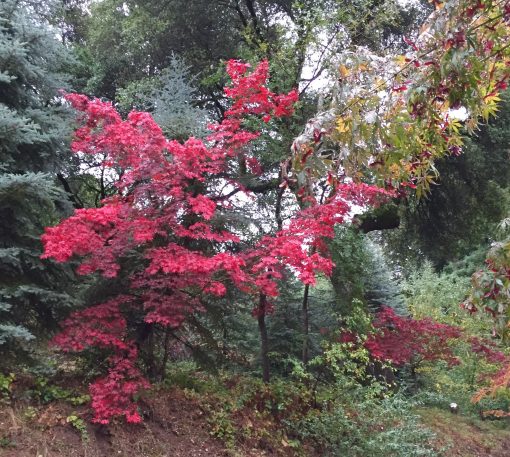
I have a Bloodgood Japanese maple that I love for the burgundy red foliage during the growing season turning to brilliant scarlet in fall. The interesting red-black bark provides interest in winter, too. This slender, upright tree is great for patios and entryways. It does well in sun also.
Another favorite Japanese maple is the Coral Bark (Sango Kaku) with the variety ‘Beni Kawa’ getting my highest marks. A cultivar originally developed in 1987, they are prized for their brilliant salmon red bark which is much brighter than the regular Coral Bark maple. The ‘Beni Kawa’ is a fast growing Japanese maple that will eventually reach 10-15 feet tall and 5-12 feet wide. It is hardy to 15 degrees. You can even polish the coral bark in the winter if you really want to see that beautiful bark.
There are so many awesome varieties available these days. From the variegated ‘Butterfly’ to ‘Oshio Beni’ with its crimson and orange fall color to ’Seiryu’, an upright lace-leaf variety with an upright habit that turns bright gold, yellow and crimson in the fall.
I see trees of all kinds going into an early dormancy showing a touch of fall color only. Every year is different.
Other things besides hot weather and not enough summer water to consider regarding fall coloring is that it can be disrupted by wind and rain coming at the wrong time. Japanese maples have a more delicate leaf than some of other trees and are more susceptible to the elements of nature. We most likely won’t get rain spoiling the display but wind during this time will put a quick end to the autumnal display.
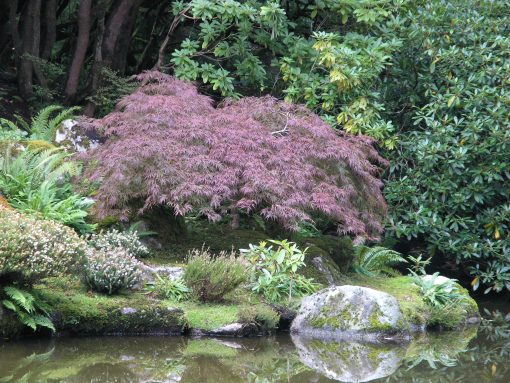
Leaves change color when they are going into winter dormancy. When nights get long enough, leaves develop a corky layer of cells between the leaf stalk and the woody part of the tree. This slows the transport of water and carbohydrates. The manufacture of chlorophyll is slowed and the green color of the leaves begins to fade, allowing the other pigments to show through. Since the transport of water is slowed down, food manufactured by the remaining chlorophyll builds up in the sap of the leaf and other pigments are formed which cause the leaves to turn red or purple in color depending on the acidity of the sap.
For example, sumacs and California wild grape almost always turn red because red pigments are present and their leaf sap is acidic, While many of the oak and sometimes ashes will get a purplish color because the sap is less acidic. Trees like birch don’t have much orange pigment, so they appear mostly yellow in the fall. Others don’t have much yellow pigment and turn mostly orange or read. Some trees have a balance of pigments and look pinkish. The brown color or many oaks can be attributed to a buildup of tannins which is a waste product in the leaves.
So don’t miss out on Japanese maple season. You won’t regret getting a new one for your yard or patio.

